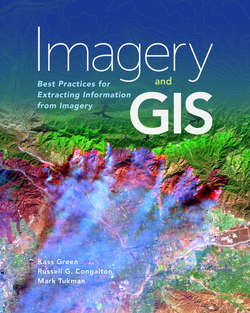Читать книгу Imagery and GIS - Kass Green - Страница 36
На сайте Литреса книга снята с продажи.
Lenses
ОглавлениеObjects emit or reflect electromagnetic energy at all angles. The angles between an object and an imaging surface change as the imaging surface moves closer to or farther from the object. The purpose of a lens in a camera or in an eyeball is to focus the electromagnetic energy being emitted or reflected from the objects being imaged onto the imaging surface. By moving the lens back and forth relative to the imaging surface, we can affect the angle of electromagnetic energy entering and exiting the lens, and thereby bring the objects of interest into focus.
Most remote sensing systems capture electromagnetic energy emitted or reflected from objects at a great distance from the sensor (i.e., at an effectively infinite distance), from hundreds of feet for a sensor in an aircraft to hundreds of miles for a sensor in a satellite. Because these distances approach infinity relative to the focal length, the lenses have a fixed focus.
The combination of the sensor’s lens and the resolution of the imaging surface will determine the amount of detail the sensor is able to capture in each image—its resolving power. The resolution of a digital image is determined by the format size of the digital array of the imaging surface.
